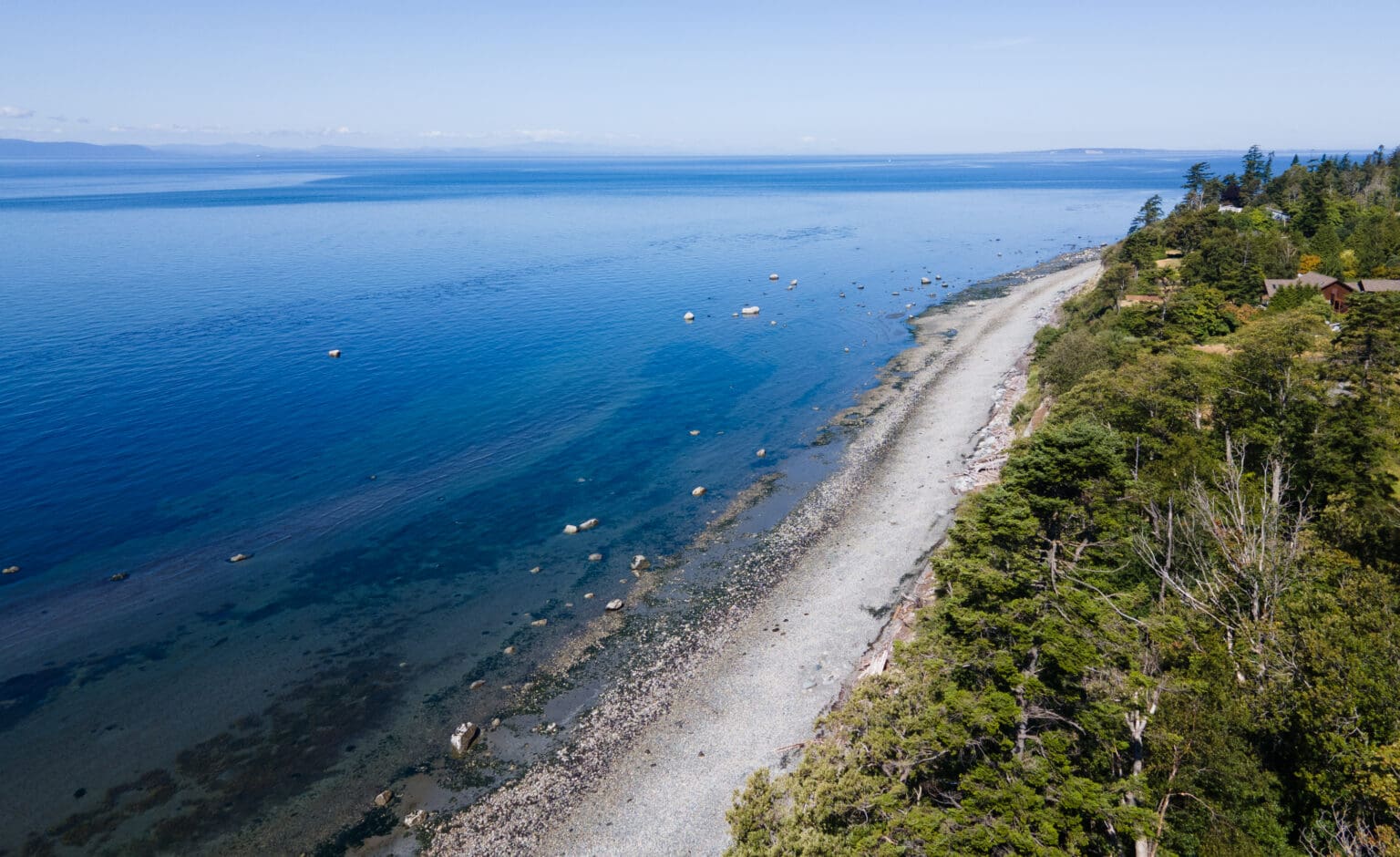Less than two decades after the federal government declined endangered species protections for Cherry Point’s herring, scientists can’t find evidence the colony spawned this year.
Once the largest stock of herring in Washington waters, the colony did not spawn in the Cherry Point Aquatic Reserve, prompting concerns the fish have relocated or are struggling in increasingly warm waters.
One expert said it is a troubling indicator of things to come in the Salish Sea.
Falling populations
The forage fish, a genetically distinct group of herring, typically spawn in April and May — later than other Puget Sound herring stocks.
Volunteers and employees at the Washington Department of Fish and Wildlife (WDFW) pay particularly close attention to the Cherry Point stock, and have monitored its population since it peaked at 13,606 tons of spawner biomass in the early 1970s. Since then, the population has been in a near freefall, plummeting almost 100% between 1973 and 2022, according to WDFW’s data.

Despite the population changes and lack of herring eggs at Cherry Point, this year could just be an anomaly, WDFW employees said.
“While Cherry Point Herring has declined, other herring stocks in the region have increased,” WDFW’s senior research scientist in forage fish research and management Phillip Dionne said in an email. “We also need to consider other forage fish species, like anchovy and sand lance, which also appear to be doing well this year.”
Even so, Dionne said concerns remain about how the loss will impact marine life.
Because of its late spawn, the fish makes up a significant portion of the diet of threatened salmon and, higher up in the food chain, the region’s endangered Southern Resident killer whales. Already, Dionne said, there’s been a “marked decline” in seabirds like the once-common scoters — birds that feed on herring eggs before nesting — in the past two years as fewer herring spawn in the area.
“We do have concerns that the low Cherry Point herring abundance may have a disproportionate impact to the ecosystem,” Dionne wrote. Those concerns exist, he said, “in part due to the late spawn timing behavior that is unique to this stock within the context of the Southern Salish Sea.”
What happened to the fish?
WDFW and volunteers are still conducting surveys of the forage fish out at Cherry Point, and monitoring other nearby spawning populations, including in Fidalgo Bay and Semiahmoo Bay, where populations are still active.
As to what happened to Cherry Point’s population, researchers may never have a conclusive answer.
“Herring spawning areas can shift from year to year,” Dionne said, “so it is possible that they spawned in an area that we were unaware of, or where we were unable to survey this year, such as across the Canadian border.”

Eleanor Hines, the North Sound baykeeper and lead scientist for local environmental nonprofit RE Sources, said there are several theories about what happened to the forage fish. She indicated the fish could have been harmed by industries out at Cherry Point, or the fish could have moved to cooler waters north of the U.S.-Canada border.
Dionne said the Cherry Point herrings are some of the only distinct forage fish populations that continue to fall. WDFW tracks 21 separate spawning groups of herring, including the Cherry Point colony, and most have increased in recent years.
“Overall, the estimated spawning biomass (ESB) of herring in Puget Sound was above the 10-year average last year, and will likely be even higher this year,” he wrote. “Our lowest estimate of spawning biomass occurred in 2013, but since then we’ve seen encouraging signs, including in 2020, when we recorded the highest ESB that we’ve observed since the 1980s.”
In 2022, researchers reported the highest amount of spawning biomass since monitoring began in Sequim Bay and in the interior of the San Juan Islands, a trend Dionne said he hopes continues this year.
Red herrings
Hines called the lack of spawning a “wake-up call.”
“While we don’t know whether this population is done for good, I think it’s a definite alarm bell,” Hines said Tuesday, July 18. “I’m afraid we’re going to see more and more things like this, especially with our southern resident killer whale populations just struggling so much.”

In recent decades, local, state and federal agencies have put in significant effort to protect endangered or threatened salmon and the southern resident orcas in Puget Sound, but Hines said leadership needs to protect species lower on the food chain, too.
“It’s not about trying to save the herring; it’s about trying to save the herring so that we can save a whole bunch of other populations, too, because they rely on it,” she said. “This is just the beginning of potentially a lot of other species starting to significantly decline.”
The National Oceanic and Atmospheric Administration declined several 2004 petitions to designate the population as an endangered species. NOAA scientists said the collapse of the Cherry Point stock would not cause a collapse of all Puget Sound herring in a 200-page technical report published in 2006.




